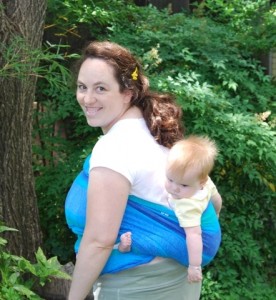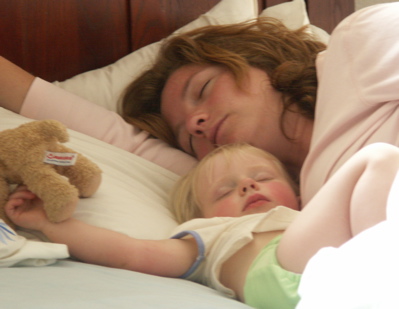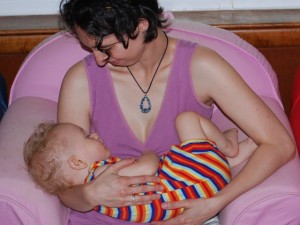A couple of weeks ago, I wrote about the American Medical Association’s decision to try to outlaw home birth over at my blog Crunchy Domestic Goddess. This announcement really hit close to home (no pun intended) since I had a home birth with my son Julian and, should my husband Jody and I want to try to have more children, I would choose a home birth again.
The first principle of Attachment Parenting is Prepare for Pregnancy, Birth, and Parenting. One of the ways I prepared for birth when I was pregnant with my son was to try out different health care providers until I found the one that was right for us.
Due to my history of having HELLP syndrome with my daughter, I thought I was considered high risk and started out my pregnancy with an OB practice. It took just two appointments for me to realize that I was only a number there and it was not the kind of care I wanted for myself or my baby.
At the recommendation of a friend, I tried another OB practice and really liked the doctor that practiced there. She seemed much more interested in me as a person and I didn’t feel like I was rushed in and out of the door. Yet, I still wasn’t 100% comfortable with the idea of another hospital birth.
After another friend of mine experienced an amazing home birth, I began talking to her more and more about it and she encouraged me to meet with a midwife just to discuss my options. She had checked with her midwife (who ultimately became my midwife and assisted with my son’s birth) and found out that my past history did not make me high risk or risk me out of being a home birth candidate. So my husband and I made an appointment to talk to her. We came armed with all of our questions and she answered them to our satisfaction and then some. It became clear to me that in order to have the kind of birth I wanted, I needed to plan for a home birth.
We felt extremely confident in this midwife’s experience, history and abilities and didn’t see any reason to interview another one. At around 20 weeks, I switched from the OB practice to my midwife, and the rest, as they say, is history. When my son was born a surprise footling breech, with the cord wrapped around his neck three times, and his arm behind his head, I was so glad we made the choice that we did. My midwife was amazing.
 I feel so fortunate that I was able to make the choice that was right for me, my baby and my family. I had the kind of birth that empowered me and made me feel like I could take on the world mostly because I had the right to choose.
I feel so fortunate that I was able to make the choice that was right for me, my baby and my family. I had the kind of birth that empowered me and made me feel like I could take on the world mostly because I had the right to choose.
I can’t imagine what taking away the right to choose would do to so many women throughout the United States. If you feel similarly, please consider signing the Keep Home Birth Legal petition and/or spread the word about this. Home birth is a choice. Let’s keep it that way.
Written by Amy from Crunchy Domestic Goddess








